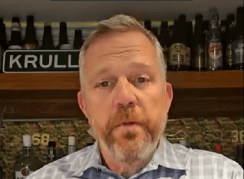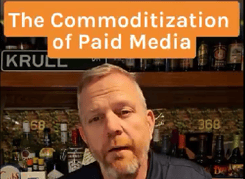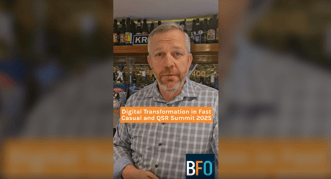

At first glance, structured data and featured snippets may not appear to have a lot in common. Structured data is a technical element, and a featured snippet is content related.
Despite what might appear as two different SEO elements, your chance of earning a featured snippet improves by using structured data. Together, they make it easier for you to connect with your target audience.
Let’s explore how this works and what you can do to capture that prized featured snippet spot.
What is Structured Data?
Structured data is information provided in a standard format in the code of a page that explains the page content to make indexing easier for Google.
Google describes structured content in this way:
“a standardized format for providing information about a page and classifying the page content; for example, on a recipe page, what are the ingredients, the cooking time and temperature, the calories and so on.”
The better Google understands the nature of the content, the better your page gets indexed and then served in response to a user search. In the example above, by including ingredients as structured data, Google is better able to recognize your recipe.
Following this example, when someone searches “world’s best hamburger,” your recipe called “World’s Best Hamburger” will not only rank high, the fact you structured your ingredients in a form Google can easily understand makes it possible to make you the featured snippet.
What is a Featured Snippet?
The content Google features at the top of a page in response to a user search query is a featured snippet. This content comes from a web page that answers the question posed by the search. In addition to the content that comes directly from the web page, the featured snippet also includes a page link, page title, and URL.
Why Everyone Wants to Have Featured Snippets
It’s all about “position zero,” that coveted position at the top of the SERP. When your web page appears there, it means Google believes you’re the best answer to a user’s search query. Being there demonstrates knowledge and authority on a subject, builds credibility, increases page clicks.
Searchengineland.com found several years back that being featured earns a lot more than clicks though! In a 2015 case study, they reported the following results after getting a featured snippet:
- 516% increase in sessions
- A 505% increase in organic traffic
- CTR increased from 2% to 8%
- Revenue from organic search improved 677%
Having a featured snippet isn’t just good for visibility and promotion; it’s a revenue driver too!
While great content is needed to get the coveted featured snippet, content shouldn’t be your only focus.
Structured Data Is Needed to Capture a Featured Snippet
Structured data is specific code written into a web page that tells “GoogleBots” (or crawlers or spiders, if you prefer those terms) what your page is about. It works behind the scenes, in the code of a page. In addition to guaranteeing Google knows what the page is about, including relevant data makes it easier for Google to convert that information into a featured snippet.
Here is one of Google’s examples of what structured data looks like:

Notice the language at the top of the code sample above: “application/ld+json.” There are two main code language types of structured data, JSON-LD, and microdata written into the HTML code of the page. As Search Engine Journal reported, Google prefers JSON-LD.
Now, a question we often get is, “What should we do if we’re not currently using JSON-LD?”
Currently, you don’t need to do anything. Google still reads microdata code. If you’re just getting started though, it would be advised to use JSON-LD. Changing to JSON-LD might also be advised if you’re doing a website update. Many developers have told us it’s easier for them to implement JSON-LD over the previously favored method of inline structured data for structured data implementation.
It is important to note too that although structured data matches the content a user sees on the page, not every page should have structured data. It should be used only where it offers value to the user experience.
If you’re aiming to earn a featured snippet for a page, well, then you need to have structured data written into the page.
One caveat about structured data:
Make sure it’s correct and correctly formatted!
Google provides this tool to test your structured data before you post it to validate its accuracy. You can also use this Google Rich Results Test to see which rich results can be generated by the structured data it contains. You can also use tools at JSONLD.com to produce correctly written JSON-LD code.
Once you’ve got the foundation of properly coded structured data embedded in your page, it’s time to optimize for that featured snippet!
What Type of Featured Snippet Should You Optimize for?
There are generally five types of featured snippets:
- Paragraph
- Table
- List
- Chart or graph
- Image
According to a 2016 GetStat analysis, 82% of all featured snippets were in paragraph form. While Google’s effort has evolved and expanded, paragraph featured snippets remain the type most often featured.
This isn’t to say you should try to make the content fit the paragraph form. If you’ve got a recipe, make your ingredients a table or list. The key to featured snippets is to deliver your content in the way that most meets your audience’s expectation.
So, the first step is to know what type of featured snippet you’re aiming for. Once you’ve got that, it’s time to consider other important factors that will play a role in capturing a featured snippet for your target keyword.
What You Must Do to Capture a Featured Snippet
Before we dive into more detailed tips on ways to optimize and earn your featured snippet, let’s address a few considerations first.
- Ahrefs found that 99.58% of all sites with a featured snippet rank in the top 10. Is it necessary? For all practical purposes, yes.
- Featured snippets are stealing clicks from the top-ranking position, again according to the Ahrefs’ study. A top ranking normally gets 26% of the clicks without a featured snippet. Introduce a featured snippet, and that number drops to 19.6%.
- SEMRush reports 41% of questions have featured snippets.
What can we take away from these statistics?
- You must be on page one. So, if your page isn’t on page one of the SERP, that must be the priority. Building a page for a featured snippet, however, is a good way to get on page one.
- Even if you control the prized #1 SERP position, you must optimize for a featured snippet to maintain your dominance for the search term.
- Your answer/information must be positioned to answer an audience question for the best chance of winning the featured snippet spot.
How to Optimize for a Featured Snippet
As with any optimization effort, a strategic approach will produce the best results. Here’s what to do:
Start with Search Terms/Pages Currently on Page 1. You need to be there to have a real chance, so this is the place to start. Prioritize the pages based on your current business and marketing strategy.
Identify the questions being asked about that keyword. Questions prompt featured snippets, so find the questions that the page answers. Assemble a list of questions for each of your priority pages.
Craft quality content. The best content provides a concise, clear and direct answer. It doesn’t have to be short, but the maximum number of words that can be shown is about 97. Ideally, if you answer a question, ask the question in your content and then follow it with the answer.
The content in the article itself should expand the initial answer provided. Including related questions and material on the subject adds value to the page.
Include images with appropriate alt-text. Images without optimized alt-text are a lost opportunity. When optimizing for featured snippets, take a moment to add alt-text or confirm it matches the content of the page. Adding new images is another way to refresh a page with new content that gets Google’s attention.
Add your structured data (as appropriate). If structured data is appropriate for the page, add that in just as it appears on the page. For guidance on writing and implementing structured data, you can refer to schema.org or the JSON-LD generator at www.jsonld.com.
After you’ve optimized pages that currently show on the first page of the SERP for featured snippets, it’s time to identify keywords you’d like to target for a featured snippet and start building a strategy following the steps just described.
Once you’ve earned your position zero spot, monitor and keep your page fresh and your answer up-to-date. Regular optimization is essential to hold to that “position zero,” keep you in front of your target audience and, as analysis shows, boost revenue too!


The BFO Team
Here at BFO, we're always striving to bring you the latest and greatest in digital marketing insights and education. We're not ones to brag, but we've been lucky enough to be featured in all sorts of fancy publications and media outlets, strutting our stuff and showing off our industry expertise.
CATEGORIES
SUBSCRIBE TO OUR BLOG
Stay up to date with the latest industry best practices in digital marketing!























.png?width=339&height=179&name=Webinar%20Banner%20(1).png)



.png?width=339&height=179&name=July%20Webinar%20(Newsletter).png)

.png?width=339&height=179&name=Webinar%20Banner-April-02%20(1).png)
%20(4).png?width=339&height=179&name=Webinar%20Banner-May-02%20(1)%20(4).png)




.png?width=339&height=179&name=March%202023%20Webinar%20Ad%20(autoresponder).png)






























































